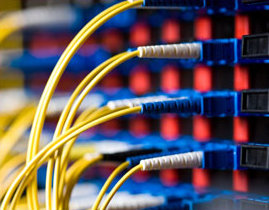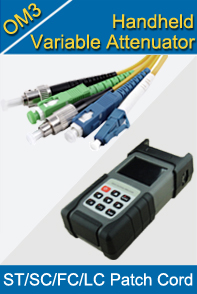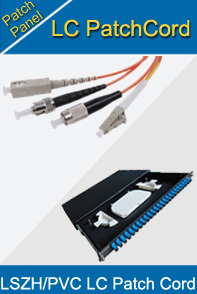-

- Sopto Home
-

- Special Topic
-

- Patch Cord Knowledge
-

- Some Common Forms of Fiber Optic Patch Cord
Patch Cord Knowledge
- Fiber Optic Connector Ferrule Design
- Fiber Optic Connector Design
- E2000 to ST Fiber Patch Cable Overview
- Acceptable and Unacceptable Fiber Connector End-Face Finishes
- Using Wipes and Cleaning Cassettes to Clean Fiber Patch Cords
- Not-Too-Tight Mating of Fiber Optic Connectors
- Matching Gel and Oils Contamination about Fiber Optic Connectors
- The Effect of Improper Use of Fiber Optic Connectors
- Why Fiber Optic Connectors are Fragile?
SOPTO Special Topic
Certificate



Guarantee
Except products belongs to Bargain Shop section, all products are warranted by SOPTO only to purchasers for resale or for use in business or original equipment manufacturer, against defects in workmanship or materials under normal use (consumables, normal tear and wear excluded) for one year after date of purchase from SOPTO, unless otherwise stated...
Return Policies
Defective products will be accepted for exchange, at our discretion, within 14 days from receipt. Buyer might be requested to return the defective products to SOPTO for verification or authorized service location, as SOPTO designated, shipping costs prepaid. .....
Applications
 Fiber Patch Cords have a widely application. Where the need for the optical fiber connection, where you need fiber optic patch cords.
Fiber Patch Cords have a widely application. Where the need for the optical fiber connection, where you need fiber optic patch cords.
Testing Equipment
FTTX+ LAN
Optical Fiber CATV
Optical Communication System
Telecommunication
SOPTO Products
- Fiber Optic Transceiver Module
- High Speed Cable
- Fiber Optical Cable
- Fiber Optical Patch Cords
- Splitter CWDM DWDM
- PON Solution
- FTTH Box ODF Closure
- PCI-E Network Card
- Network Cables
- Fiber Optical Adapter
- Fiber Optical Attenuator
- Fiber Media Converter
- PDH Multiplexers
- Protocol Converter
- Digital Video Multiplexer
- Fiber Optical Tools
- Compatible
Related Products
Performance Feature
Good Water-proof
Low insertion loss;
low reflection loss;
Stability, good repeatability;
High-precision ceramic ferrule;
Compatible with NTT standard;
Precision Grinding and fully testing;
Compliance with international standards
Patch Cord Knowledge
Recommended


Some Common Forms of Fiber Optic Patch Cord
Fiber optic patch cable can take many forms. Here's a look at some of the most common. Simplex and zip cord cables consist of one or two fibers that have been tight-buffered and Kevlar-reinforced and jacketed. Such optic fiber cables are used mostly for patch-cord and backplane applications.
Tightpack optic cables, also known as distribution cables, are made up of up to several tight-buffered fibers bundled under the same jacket with Kevlar reinforcement. These cables are small in size, but because their fibers are not individually reinforced, they need to be terminated inside a patch panel or junction box. They are generally used for short, dry conduit runs as well as riser and plenum applications.

Breakout fiber cables are made of several simplex units, cabled together to produce a strong, rugged design suitable for conduit runs and riser and plenum applications. Because each fiber is individually reinforced, this type of cable allows for a strong termination to connectors and can be brought directly to a computer back plane. Breakout cables are larger and more expensive than tightpack cables.
Loose-tube cables are considered ideal for outside plant trunking applications. Depending on the actual construction, they can be used in conduits, strung overhead, or buried directly into the ground.
Composite cables are those that contain a number of copper conductors (jacketed and sheathed depending on the application) in the same cable assembly as optical fibers. Be careful of the terminology there. Prior to 1993 NEC, such cables were known as hybrid cables, but today that term typically refers to cables that contain only optical fibers - but both multi-mode and single-mode fibers.
For more high quality fiber optic patch cords or how to get the newest quotes, please contact a Sopto representative by calling 86-755-36946668, or by sending an email to info@sopto.com.



